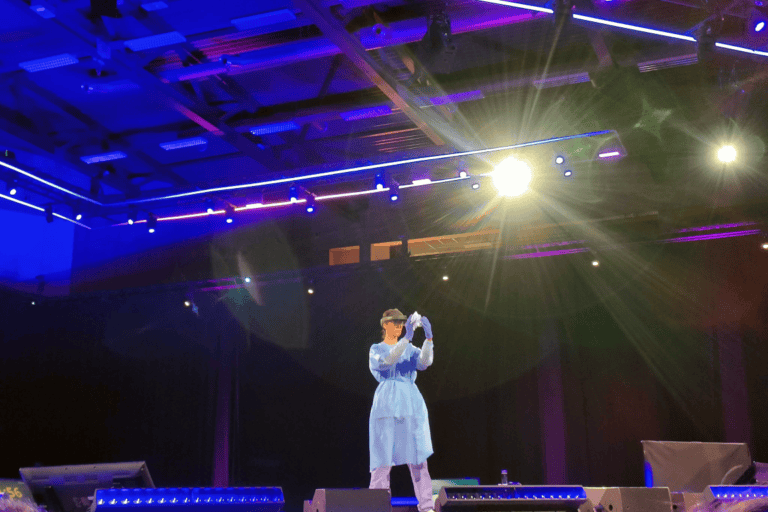What role does hardware play in new developments in healthcare? What challenges are involved? During an event in Leuven, Belgium, we got a unique insight into how ‘Health meets Hardware’.
IT is an important innovator in healthcare. Yet, within healthcare, there is still a big mismatch between the importance of technology and the knowledge about it. This mismatch has already developed during the school years, indicates Gratienne Sioncke, Founding Executive Director of BORGinsole. She speaks from her own experience with trainees. “We see that trainees, especially in the first few weeks, need time to adapt to technology. Our workplace has a very technological side, which is not addressed in education.”
Sioncke’s experiences describe areas for improvement in the Belgian education system and healthcare training. BORGinsole has a production lab in Rotselaar, but the product is available at more than 200 European podiatry practices.
Leuven is a hotbed of tech development
Shifting the focus to the IT world, quite a few companies do know how to create value for healthcare. About 30 percent of Leuven’s technology innovations are aimed at this sector. BORGinsole is one of the companies at the intersection of healthcare and IT. The company develops insoles for (elite) athletes based on 3D scans. The production process involves a mix of digitization, automation, and robotization. Sioncke describes it as a “deliberate decision” because of the precision that production requires. But also out of necessity because of the shortage of technical profiles in the healthcare sector who could fill this job.
Those training in healthcare may not be looking for their future job in a manufacturing environment anytime soon. But even outside of that, it won’t be long before these professionals come into contact with technology.
Students from UCLL Hogeschool propose an example for nursing homes, specifically for patients with dementia. Research has shown that long-term memory is often intact in these patients. With a ‘dementia harp,’ the students try to tap into that memory. Using the harp is simple, as it is no secret that technology and the elderly do not usually go well together. All it takes to operate it is a touch on one of the tubes; a personal memory in the form of a photo, video, or audio then begins to play automatically.
According to the researchers, the harp improves the lives of people with dementia on several levels. By bringing memories to the surface, the person regains an idea of their former life, making conversations with family easier. This also addresses another problem that people with dementia sometimes struggle with: social isolation.
Also read: Microsoft bets on healthcare with Copilot Agents and LLMs
Patient comes first
To develop the harp, the students spent a week at the Toermalien residential care center in Genk. This gave them insight into the challenges faced by persons with dementia and care staff. By being in the field, they learned what healthcare is all about the patient. In the tech scene, that is more often a bigger challenge. Developments there more often have other motivations, such as financial interests.
Jan Vermeir, President of the Young Parkinson’s League, talks about the rather painful gap between IT innovations and patient well-being. In Flanders, this disease affects tens of thousands of people; Vermeir is one of them. In addition to the challenges of living with Parkinson’s, he and other patients run into challenges with technological tools. Devices that improve their lives and on which patients rely. But sometimes, the manufacturers of these devices take the help away as they decide to focus on newer editions out of financial interest.
Like upgrading a phone, you might think that these patients can replace their devices with newer editions. That’s a little more complicated in healthcare environments. Vermeir cites an example: “Individuals with deep brain stimulation (DBS) devices do not have the ability to upgrade to a new version. The brain is not suited to have new electrical wires inserted every so many years.”
The technology world can still learn from the healthcare industry the importance of putting the patient or user first. Knowledge in the healthcare sector about the tech world can also improve. Hardware and healthcare thus converge to the benefit of patients, but at the same time create challenges for both sectors.
Another IT challenge for healthcare organizations is security: Healthcare sector increasingly popular target for ransomware criminals
